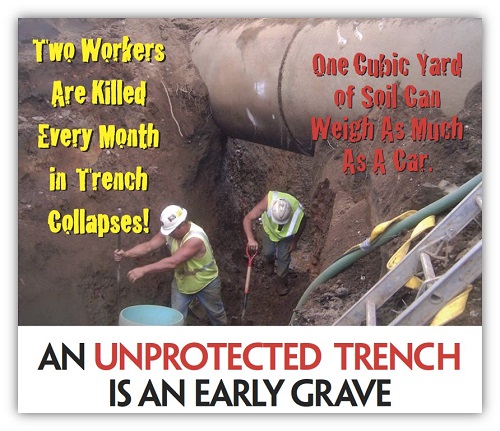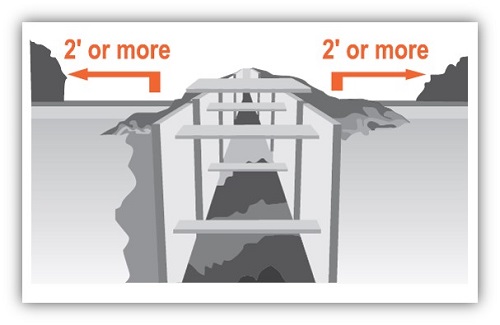Trenching and excavation work poses many hazards such as cave-ins, equipment struck-by incidents, potential falls, and striking underground utilities.From putting a shovel into the ground to digging a trench, do you know all the OSHA standards that apply for excavations?

OSHA Standard 1926.650(b) "Excavation" means any man-made cut, cavity, trench, or depression in an earth surface, formed by earth removal.
OSHA regulations consider any digging activity as excavating. Anyone who is doing any kind of excavating activity MUST call 811 from anywhere in the country a few days prior to working on excavations or trenches.
OSHA Standard 1926.651(j)(1) Adequate protection shall be provided to protect employees from loose rock or soil that could pose a hazard by falling or rolling from an excavation face…
Workers must be protected from rocks, debris, loose soil, or other materials that could fall into the excavation while they are working. Loose rocks should be scaled, scraped or knocked down from the sides of excavations or trenches to prevent them from falling onto workers.

Spoil piles should be set back 2-feet from the edges of excavations to create a safer work area.
OSHA Standard 1926.651(h)(1) Employees shall not work in excavations in which there is accumulated water, or in excavations in which water is accumulating, unless adequate precautions have been taken to protect employees against the hazards posed by water accumulation.
Water saturated trenches and excavations are extremely dangerous for those working inside of them. Never work in unprotected trenches or excavations that have water accumulating or are water saturated. Water pumps or other devices should be used to control water seeping into trenches and excavations. All water control devices must be inspected and maintained.
OSHA Standard 1926.651(h)(3) …Excavations subject to runoff from heavy rains will require an inspection by a competent person.

.jpg)

.jpeg)